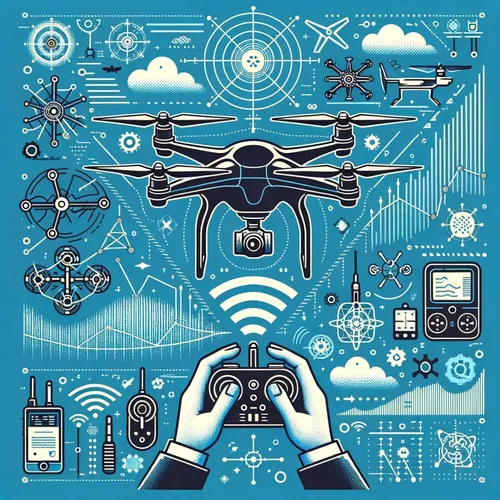Drones Gone Wild: Spying on Crops, Peeking at Pipelines, and Cozying Up to Big Data
- Author
- Quiet. Please
- Published
- Mon 04 Aug 2025
- Episode Link
- https://www.spreaker.com/episode/drones-gone-wild-spying-on-crops-peeking-at-pipelines-and-cozying-up-to-big-data--67242923
This is you Commercial Drone Tech: Enterprise UAV Solutions podcast.
Commercial drones are rapidly reshaping enterprise operations, especially in sectors such as construction, agriculture, energy, and infrastructure inspection. Leading companies are using drones for automated site surveys, crop health mapping, utility line inspections, and routine maintenance checks, with real-time imagery and sensor data delivered straight into existing business intelligence systems. In construction, drones reduce traditional survey timelines from weeks to days, increasing precision and minimizing rework costs, while large-scale growers now leverage multispectral drone imagery for early detection of crop stress and variable rate application, boosting yields and cutting resource use. Similarly, energy firms deploy fleets to spot faults in remote solar fields or power grids, enhancing safety by keeping teams out of hazardous areas and reducing downtime.
Several high-profile developments this week highlight the momentum in enterprise drone technology. FlytBase has introduced next-generation drone autonomy software, integrating advanced AI for real-time object detection and streamlined video analytics, tailored for compliance and robust data security. Meanwhile, DJI’s FlightHub 2 now offers a seamless, cloud-based mission planning and fleet oversight experience, cutting through the challenges of scaling up operations across departments or even continents. VOTIX has expanded its platform’s API integration, enabling drones to plug into existing enterprise asset management and IT systems, so drones now become full digital collaborators within larger IoT ecosystems.
Return on investment for enterprise drone programs is becoming increasingly concrete. According to market studies, construction and infrastructure firms have reported cost savings of up to forty percent on surveying operations and dramatic increases in data accuracy. In agriculture, yield improvements and optimized input use have delivered returns often within the first season. Cutting-edge management platforms like Aloft and Airdata provide airspace and fleet oversight, regulatory compliance tracking, and smart maintenance scheduling, vital as organizations increasingly operate fleets of dozens or hundreds of drones. These platforms also facilitate time-based maintenance and component tracking, echoing manned aviation’s safety standards but tailored for unmanned fleets.
Security and compliance are front and center, with enterprise-grade platforms delivering ISO and SOC-certified environments, flexible user permissioning, and built-in support for FAA requirements such as Remote ID and LAANC. To ensure safe and scalable adoption, industry leaders stress the importance of pilot training, clear implementation protocols, and robust integration between drone management solutions and existing IT infrastructure. Looking ahead, listeners can expect deeper AI integration, wider use of fully autonomous drone-in-a-box systems, and tighter coupling with GIS, ERP, and OT platforms, driving even greater value.
For enterprises considering or scaling UAV operations, the practical takeaways are clear: select management platforms that meet regulatory needs, invest in staff training, prioritize solutions that integrate with your legacy systems, and plan for data privacy and workflow security from the outset. Thank you for tuning in, and come back next week for more. This has been a Quiet Please production. For more, check out Quiet Please Dot AI.
For more http://www.quietplease.ai
Get the best deals https://amzn.to/3ODvOta
